News
Fetterman Fight Anniversary Tour

The Fetterman Fight, also called the Battle of the Hundred-in-the-Hands by the Sioux, was fought on Dec. 21, 1866. On Dec. 21, of each year Fort Phil Kearny and the Bozeman Trail Association host a tour of the battlefield, weather permitting. Last year, the tour was canceled due to weather.
The tour is usually led by historian Bob Wilson, who passed away earlier this year. In his introduction, Dave McKee, president of the FPK/BTA, asked for a moment of silence during the presentation to honor Wilson’s memory.
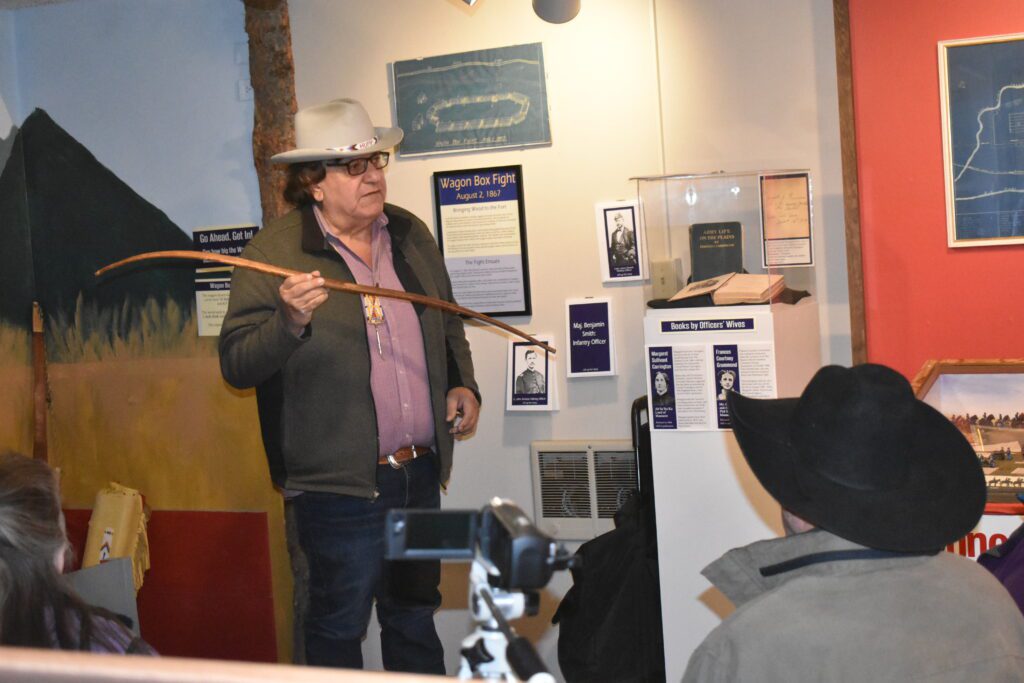
Donovin Sprague took the stage and talked about the Indian view of the battle. Sprague’s ancestor, Hump, was one of the principal fighters on the Sioux side of the battle. Sprague was born and raised on the Cheyenne River Sioux Reservation in South Dakota and is a member of the Minnicoujou Lakota. He is an historian, the author of ten books, and currently teaches at Sheridan College. He is on the Fort Phil Kearny/Bozeman Trail Association Advisory Board.
He added he had to earn his name, Hump. He earned it by keeping history, records, photographs for not only his family but for the Cheyenne River Sioux tribe.
He talked about how the soldiers took a linear view, how one thing follows another in sequence, but he wanted to present a more global view from the Native Americas, and he talked to the group about his people.
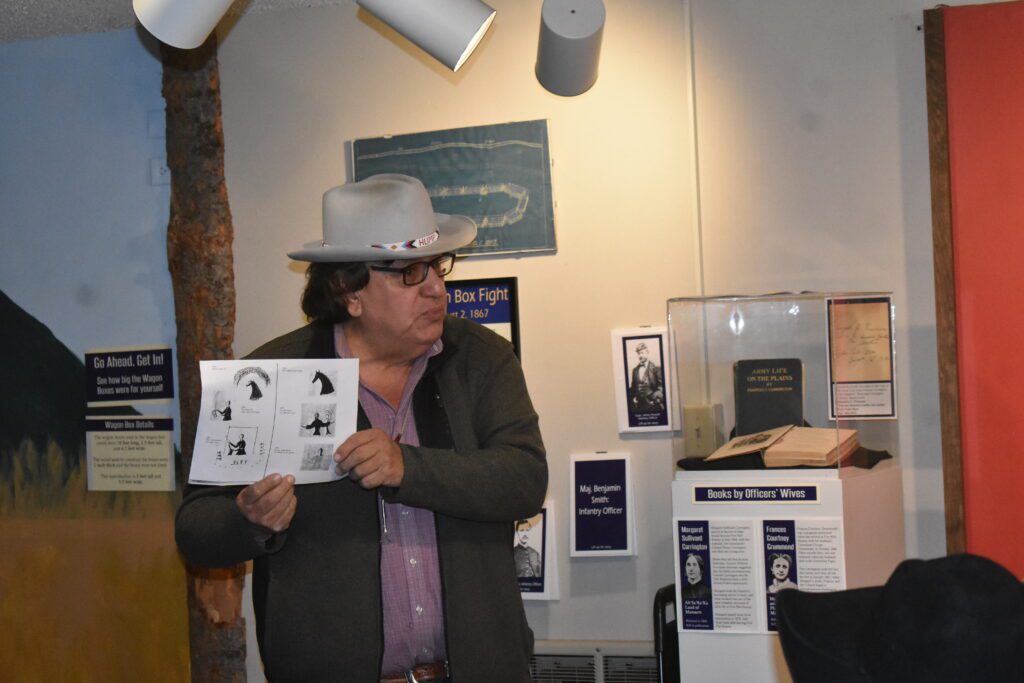
Although the Native American’s didn’t have a written language, their history has been passed down through stories and legends, and the winter-count buckskins.
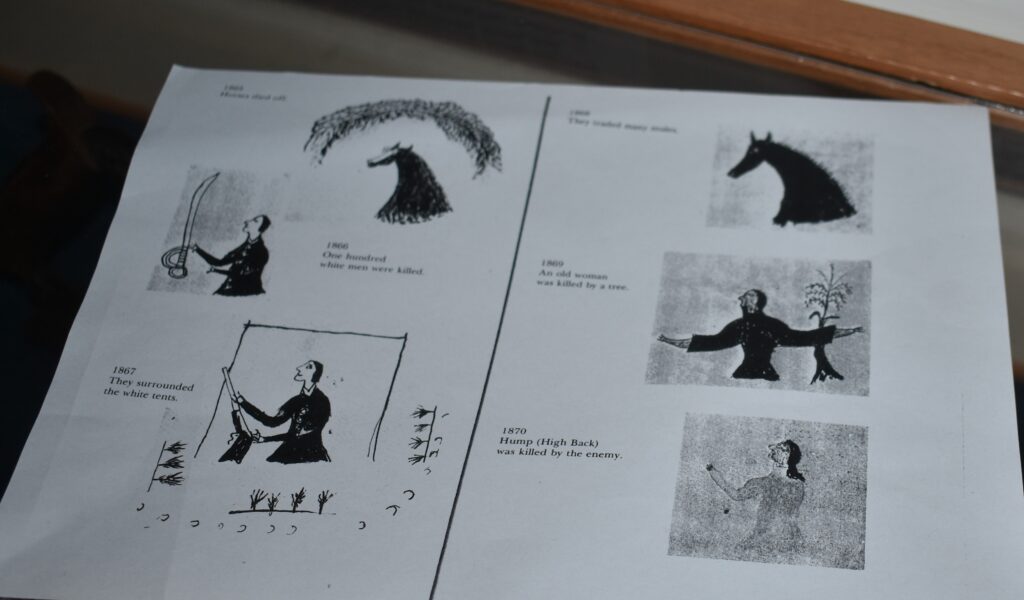
He talked about George Catlin, who painted portraits of many of his ancestors. He also talked about the traditional hunting lands, from the Missouri River, all of South Dakota, the Black Hills and all the way to the Big Horn Mountains.
He talked about Crazy Horse and how he became a famous leader,
Sprague is a bow maker and a flute maker, and he played a short piece of flute music for the audience.
After Sprague’s talk, Kearny’s Frontier Regulars demonstrated a small cannon for the group, and then the tour continued at the battlefield.
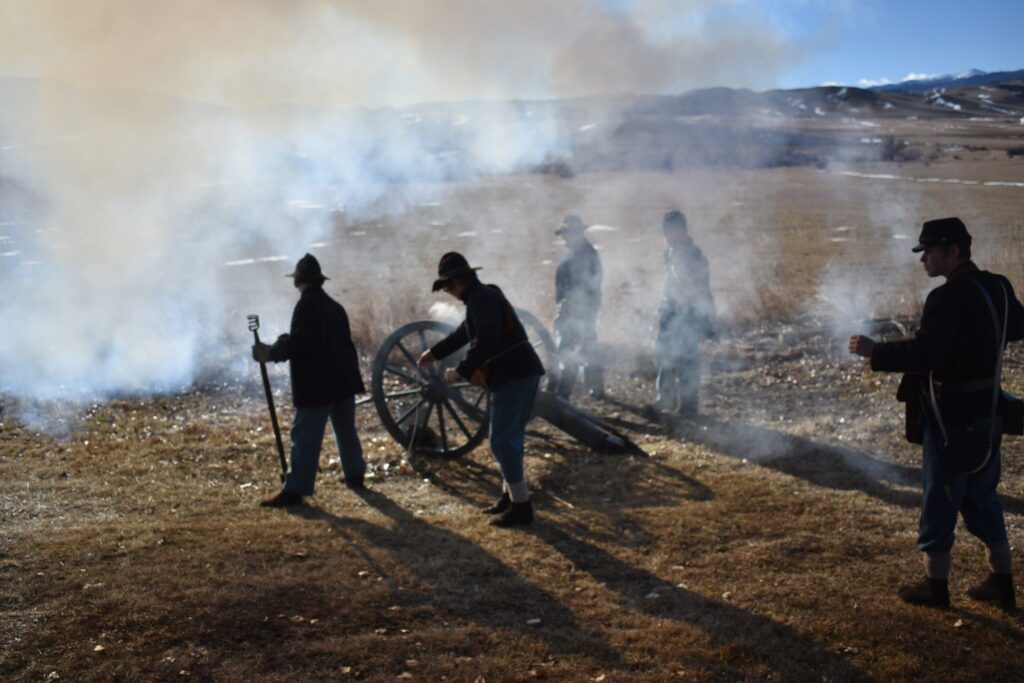
Jim Powers, longtime Sheridan resident and archaeological technician talked about the archaeology at the site. He also pointed out an error on the plaque on the monument at the battle site. The plaque, written and placed on the monument in 1908, said there were ‘no survivors.’ Of course, that meant soldiers. As Sprague pointed out, there were many survivors among the Native American forces.
Powers said that one of the problems archaeologists, who work the old battle sites, was trash, modern day and even during the Bozeman Trail travel days. People dropped stuff, built fences, and the metal trash played havoc with metal detectors.
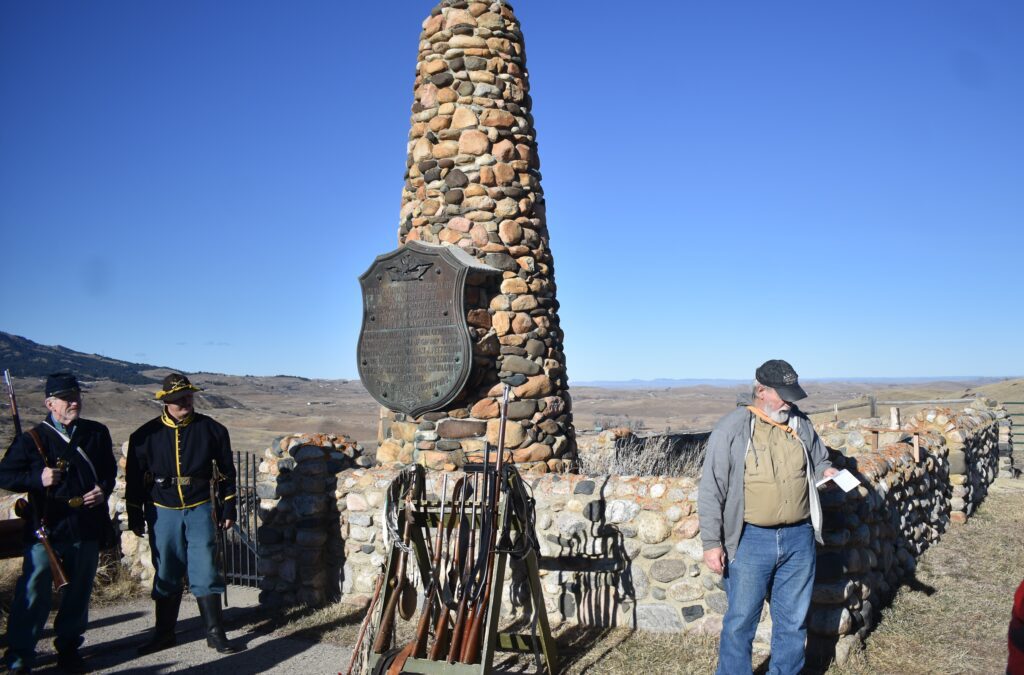
He added that relic hunters also disturbed the site.
The Frontier Regulars gave a weapons demonstration as well at the fight site, with some of the long guns that were used at the Fetterman Fight.
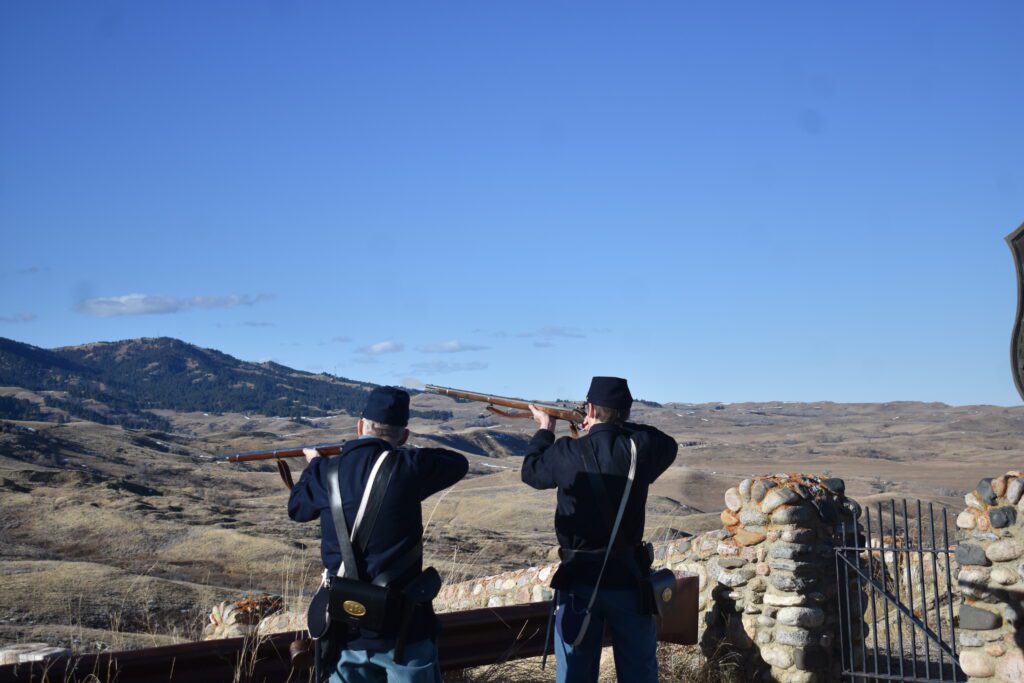
The day was warm and sunny, and over 70 people attended the program. As Sonny Reisch, former superintendent, historian and curator at Fort Phil Kearny, said, “Almost as many people as rode out with Fetterman.” Fetterman had 81 soldiers and civilians who died with him at the battle.


Timothy Mulligan
December 22, 2023 at 8:30 pm
Thanks very much for the recorded comments and illustrations, allowing at least a partial participation in this program!